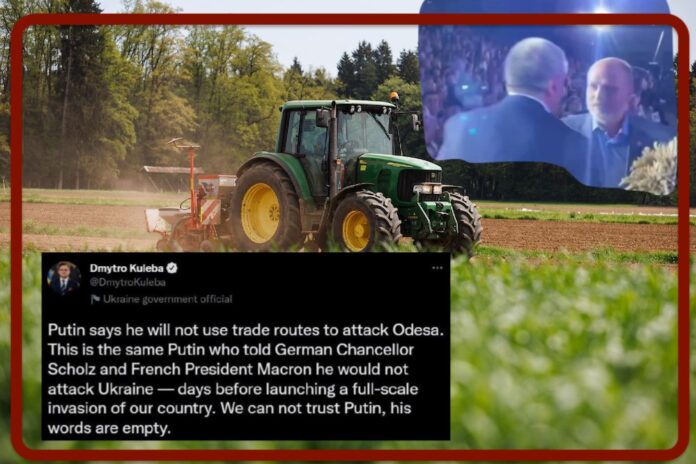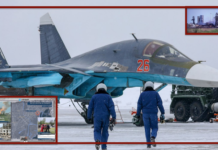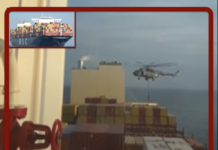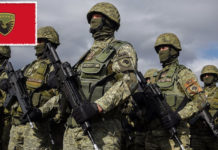
According to the Izvestia newspaper, in the event of the resumption of peace negotiations between the Russian Federation and Ukraine, the status of the Kherson and Zaporozhye regions will not be discussed, just as the issue with Donbass and Crimea is closed. The fighting could have been stopped in March, a source told the newspaper on seven June, but the West exerted pressure on Kiev, which led to the halting of the process. Dmitry Sergeevič Peskov, Putin’s spokesman, later denied media reports that the Russian Federation would not discuss the status of Kherson and Zaporozhye with Kiev in the future.
Meanwhile, military analysts in the social sphere say that Ukraine is losing a lot of foreign artillery due to poor maintenance: some of it has to be sent to Poland for repairs. Ukraine is absorbing Western equipment much faster than some expected. The Ukrainian army, according to some reports, now also uses Bozok guided aerial munitions for the Bayraktar TB2 attack UAVs. However, this does not change the situation on the Donbass front at the moment.
The Russian Defence Ministry reportedly offered the AFU forces in Sviatogorsk to surrender, guaranteeing normal prison treatment. Cut off from main forces and supplies, the men of the battalions of the AFU’s 95th Airborne Assault Brigade and the AFU’s 81st Independent Mobile Brigade abandoned their military equipment along with their weapons and up to 80 people swam across the river and dispersed along the coast. The Ministry of Defence notes that fire was not opened against the fleeing AFU forces to prevent the destruction of Sviatogorsk. Overall, it appears that the AFU defences in Sviatogorsk have begun to collapse after several days of fighting and ‘the situation has changed dynamically’. Sergei Shoigu explained at a press conference on 7 June.
On Ukraine’s borders, after the panic of the Baltic republics and Poland over the fear of a Russian assault, now entering the loop of a possible attack, this time by Kiev, is Belarus, which, as part of the creation of an operational command on the border with Ukraine, has decided that the number of its armed forces should be reduced to 80,000.
In terms of military losses, however, it is recorded that in 10 days, the Russian armed forces destroyed 51 units of military equipment in Ukraine from abroad. This includes 12 armoured fighting vehicles, twenty-one 155mm howitzers, two MLRS and 16 unmanned aerial vehicles. While the number of Ukrainian prisoners rose to 6489. The number of casualties was not specified on either the Ukrainian or Russian side. Among the news reported in the social sphere it appears that the head of the Defence Committee of the Russian State Duma and former Russian Deputy Defence Minister Kartapolov may be sent with the CSTO peacekeepers to the LNR, DNR and the Ukrainian territories now under Russian control.
In addition to the military war between Russia and Ukraine, an economic war is also taking place. EU sources claim that Moscow destroyed one of the largest grain terminals in Ukraine on 4 June. ‘In light of such reports, the disinformation spread by Putin to deflect blame from himself becomes even more cynical,’ the EU diplomacy chief wrote on his Twitter.
According to the mayor of Nikolaev, Alexander Senkevich, Russian troops fired at an infrastructure on 4 June. As a result, warehouses with wheat flour erupted. It took two days to extinguish the fire. When one considers how difficult it is to get ships out of the port of Odessa because of the mines, and the Russian control of other ports, the Ukrainian economic crisis due to the lack of grain sales becomes more and more important, and Ukrainian citizens suffer the direct consequences.
In the meantime, the Russians are exporting: from official Russian sources, the Russian Grain Union, we learn that wheat exports in May amounted to 1.26 million tonnes, almost twice as much as in May 2021 (675 thousand tonnes). How much of this wheat or whether it came from the conquered areas is unknown. In a ceremony in Kherston, the local authority handed over the famous Kherston wheat to the Crimean authorities in a symbolic manner.
It is also recalled that ‘a road connection from mainland Russia to Crimea has been opened’, Russian Defence Minister Sergei Shoigu said at a press conference on seven June. Shoigu also stated that the necessary conditions for the resumption of rail traffic between Russia, Donbass, Ukraine and Crimea had been created at six sites.
To return to the agricultural issue: the share of Ukrainian wheat on the world market is 11%, that of sunflower oil 55%. In 2020-2021 the country exported 44.72 million tonnes of grain and pulses, of which 16.64 million tonnes of wheat (Russia exports 49 million tonnes). Not so long ago, Russia proposed to Ukraine to establish a ‘wheat OPEC’, but it did not go through.
Until 2022, 90% of Ukraine’s wheat was exported by sea. In 2021 (financial, not agricultural) 51.2 million tonnes were exported through ports. According to Andrey Stavnitser , director of the TIS port of Yuzhny, the capacity of the westbound railway does not exceed 10 million tonnes.
At the moment, some ports are lost (Mariupol, Kherson) and some are blocked (ports in the Odessa region). Ukraine has undermined access to its commercial ports (primarily the largest one, Odessa) and at the same time accuses Russia of blocking the coast.
Now Ukraine is ready to export some 20 million tonnes of grain, which, according to Western politicians, is needed to prevent a global food crisis. Vladimir Putin thinks otherwise: ‘Around 800 million tonnes of wheat are produced in the world every year. Ukraine is ready to export 20 million tonnes, or 2.5 per cent. If we start from the fact that wheat accounts for only 20% of the total food supply in the world, it means that these 20 million tonnes of Ukrainian wheat are 0.5%’.
According to some analysts, a pro-Ukrainian media campaign is behind the Ukrainian wheat issue for at least three reasons: firstly, it is a special information operation to divert attention from the real causes of the food crisis and blame Russia for its occurrence. Secondly, to make some money: to resell Ukrainian grain to those who need it (most likely, to Ukraine itself, which bought flour in Turkey in 2021) and to provide work for shipping companies, ports and storage facilities. Thirdly, if successful, provide a channel for the import of weapons through Ukrainian ports.
And speaking of weapons, the international social media analysis channel Rybar, says that personnel from the Moldovan PMC ARGUS-S, owned by oligarch Vladimir Plahotniuc are guarding the southern grain and weapons route. The river ports of Izmail, Reni, Kiliya and Ust-Danubsky. They are low-capacity ports and, especially after the damage to the Zatoka Bridge, access to them is only possible by road, mainly through the territory of Moldova. Vladimir Plahotniuc is suspected of arms trafficking and now the ATGM Javelin those that have recently appeared among militants in Syria we have no elements to verify the news.
The ‘northern’ route through Poland relies on the capacity of level crossings on the western border. In April, only 638,000 tonnes of wheat were exported. In total, Ukraine exported 1.06 million tonnes of wheat crops from 1 May to 30 May 2022, which is 2.7 times less than in May 2021 (2.81 million tonnes).
Alternative routes were suggested by Vladimir Putin in a recent interview: ‘Firstly, these are “the ports of the Azov Sea – Berdyansk, Mariupol” are under our control, we are ready to ensure regular export, including Ukrainian wheat, through these ports. Secondly, through Belarus – because from there immediately to the ports of the Baltic States, to the Baltic Sea and beyond to anywhere in the world. To do this, sanctions must be removed from Minsk. Thirdly, this is the Black Sea Basin – Odessa and the neighbouring ports. It was not us who blocked access, it was Ukraine that put mines in the sea’.
According to an article published in Izvestia on 6 June, an agreement was reached on the last option: Odessa. According to the newspaper source, ‘the scheme will be as follows: the Turkish military will be engaged in demining the coastal area in the Odessa region (Vladimir Putin clarified: “We will not use the demining situation to launch attacks from the sea”). The ships will leave port under the escort of Turkish ships to the neutral waters of the Black Sea at the established coordinates. Beyond the Bosporus, they will be escorted by Russian warships to ensure their safe passage through the Black Sea and avoid provocations. This scheme has been agreed with Turkey and Ukraine, the exact route of the ships remains to be detailed’. The Ukrainians said no. Kuleba in a social message said god did not trust Putin’s words.
Graziella Giangiulio

















